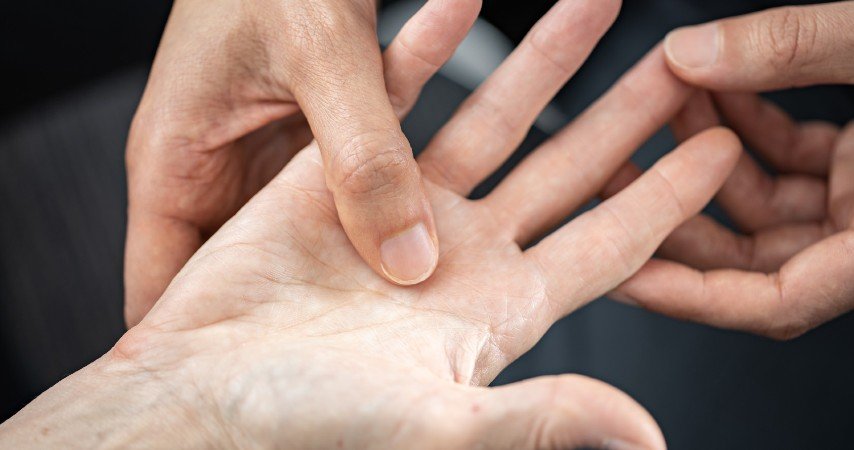
Trigger finger is a condition where one of your fingers becomes painful, stiff, or even “locks” when you try to move it. Normally, the flexor tendons that bend the fingers glide smoothly within a protective sheath. When this tendon becomes thickened or develops a nodule, it may catch on the sheath, resulting in pain and difficulty straightening the finger.
In many cases, trigger finger surgery may be recommended if non-surgical options are not effective.
The signs of trigger finger can range from mild stiffness to significant pain and finger locking. Recognising these symptoms early helps in seeking appropriate care.
Common symptoms include;
If these symptoms persist or worsen, your doctor may recommend trigger finger surgery to restore smooth finger movement.
This can lead to symptoms of pain on moving the affected finger and in severe cases can cause clicking or locking of the finger leading to an inability to straighten the finger.
Trigger finger can often be diagnosed during a physical examination. Your surgeon will check for pain, swelling, and locking in the finger.
In some cases, an ultrasound scan may be used to:
Early diagnosis ensures timely treatment and helps prevent worsening of symptoms. If the problem persists despite conservative treatments, trigger finger surgery is usually considered.
Trigger finger can usually be diagnosed on clinical assessment, however in some cases an ultrasound may help in locating the site of the thickening or nodule in the tendon.
Treatment depends on the severity of symptoms and how long you have had the condition.
Non-Surgical Treatments:
Surgical Treatment:
If non-surgical treatments fail, trigger finger surgery is recommended. The surgery releases part of the tight tendon sheath, allowing the tendon to glide more freely. It is a straightforward procedure with a high success rate and is often done as day surgery.
This procedure is a simple day surgery designed to relieve symptoms and restore smooth finger movement.
What happens during surgery?
Day Surgery Explanation:
While trigger finger surgery is generally safe, all procedures carry some risks. Complications are rare, but may include;
Your surgeon will only recommend surgery if the benefits clearly outweigh these risks. Most patients recover well with significant improvement in hand function.
After trigger finger surgery, proper care and a gradual return to activity are important for smooth healing and optimal outcomes.
Typical recovery process:
Most patients regain normal hand use gradually, with pain and stiffness improving as healing progresses.
If you have trigger finger surgery, the majority of the cost is rebatable through Medicare and standard private health insurance. This does require a referral from your family doctor.
After your consultation, a detailed quote will be provided to you including the surgeon fee, anaesthetic fee and hospital fee.
No. Trigger finger surgery is considered a minor day procedure, usually done under local anaesthetic, with most patients going home the same day.
The surgery itself is not painful as anaesthetic is used. Some soreness or swelling may occur afterwards, but this usually improves within days.
You can use this form to request a call back.
Please be aware that all surgical procedures require a consultation with our plastic surgeons to allow a thorough assessment and discussion of your specific needs.








Plastic Surgery Central
235 Greenhill Rd
Dulwich SA 5065